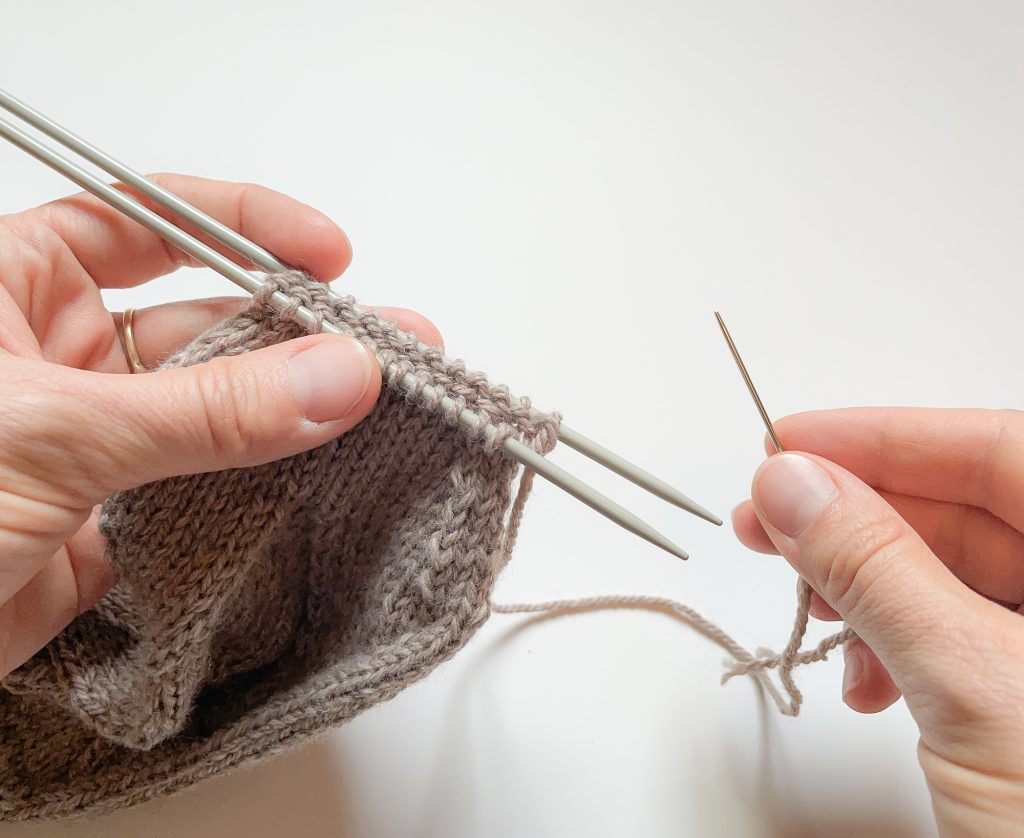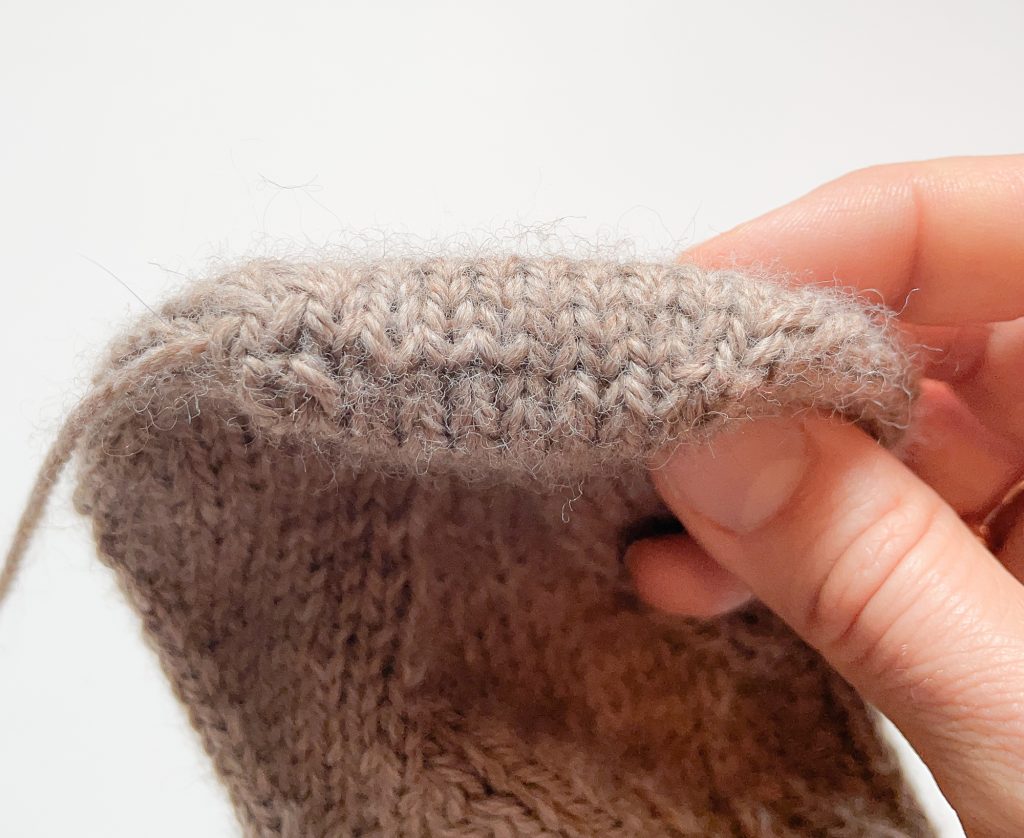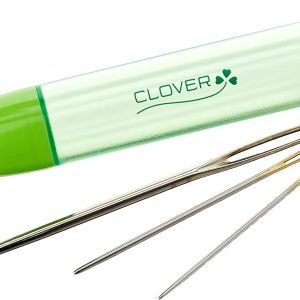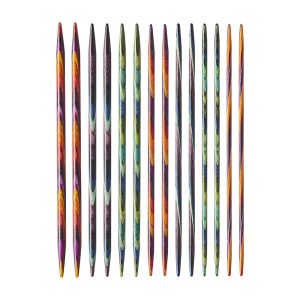The Kitchener Stitch, also called grafting, is an excellent technique to join two sets of live stitches together, while reproducing knit stitches to perfection. It is usually used as a bind-off for two sets of live stitches, instead of sewing bound-off edges together, resulting in a finished look that is much prettier than a bulky seam. It is useful every time you need to join two pieces of knitting together, for example, to close socks at their toe edge or to join both ends of a cowl together.
You will need:
- Working yarn
- Working needles
- Tapestry Needle
Placing the work: when finishing your project, cut the yarn from the ball, leaving a long tail about 3 times as long as the edge. Thread the yarn through the tapestry needle. Place the needle with the yarn attached to the first stitch in back and the other needle in front.
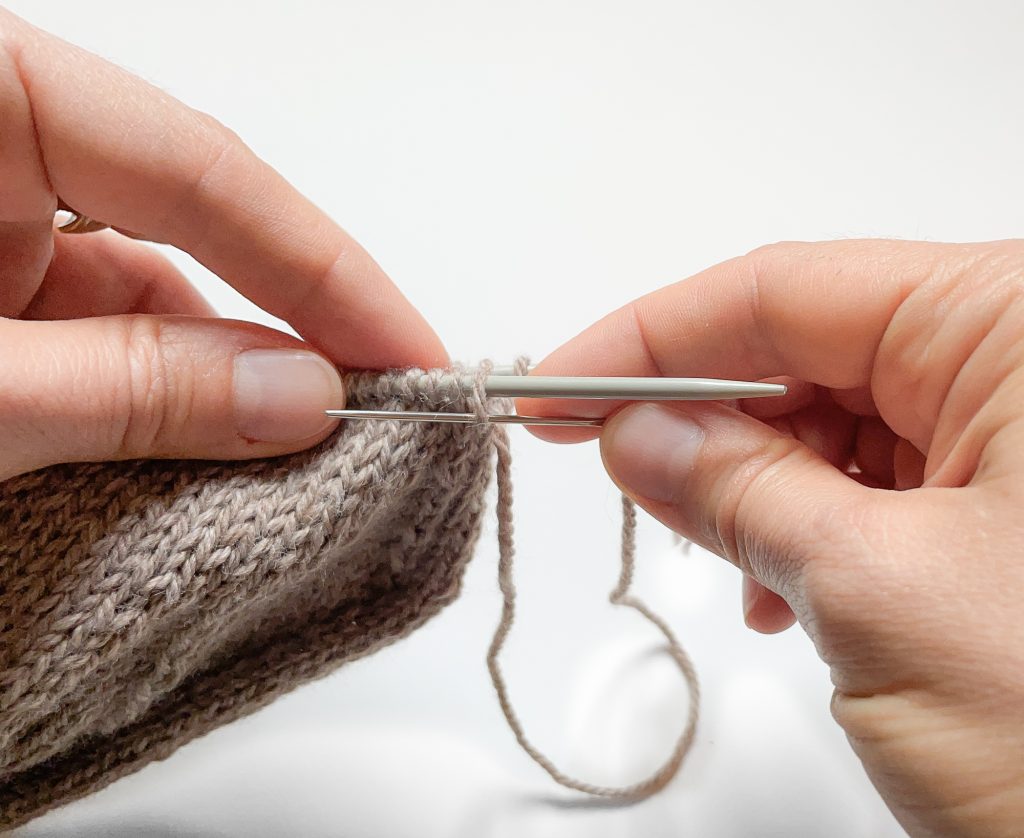
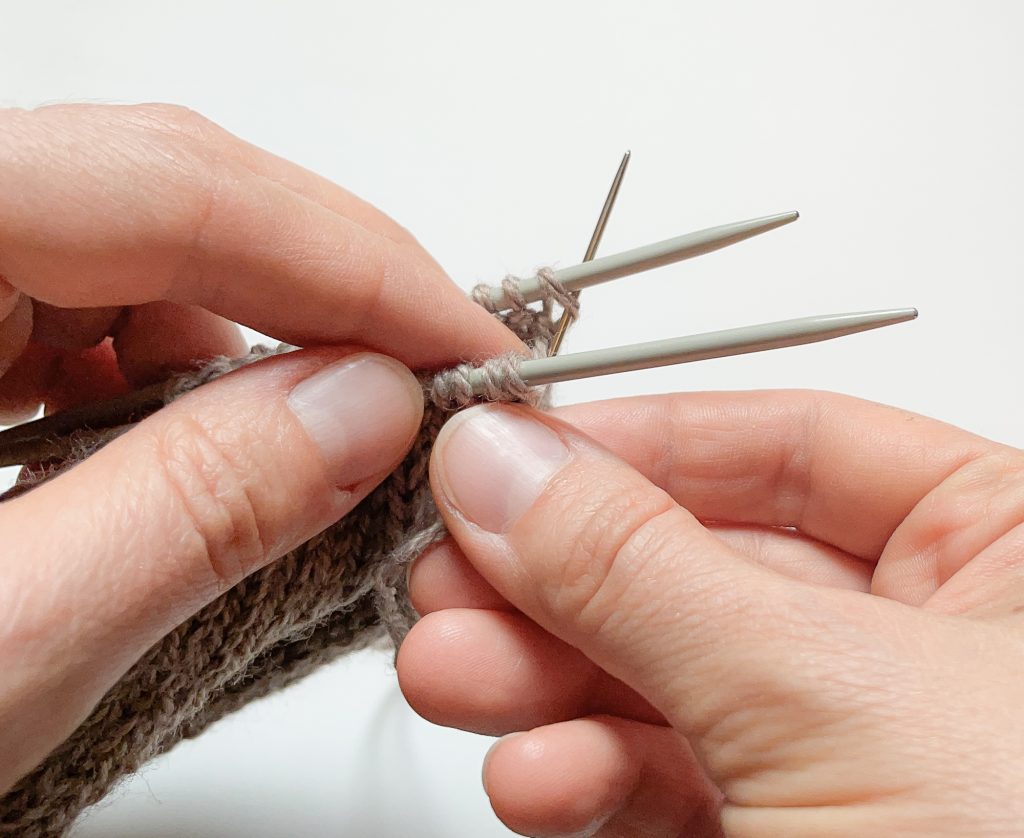
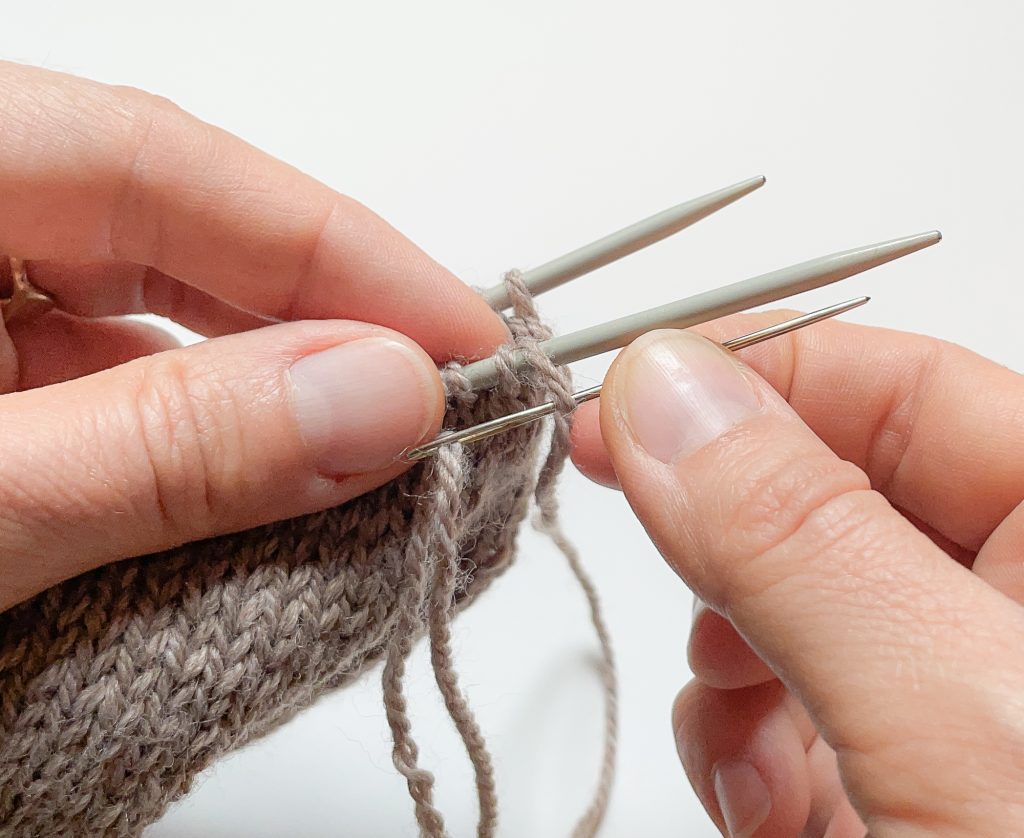
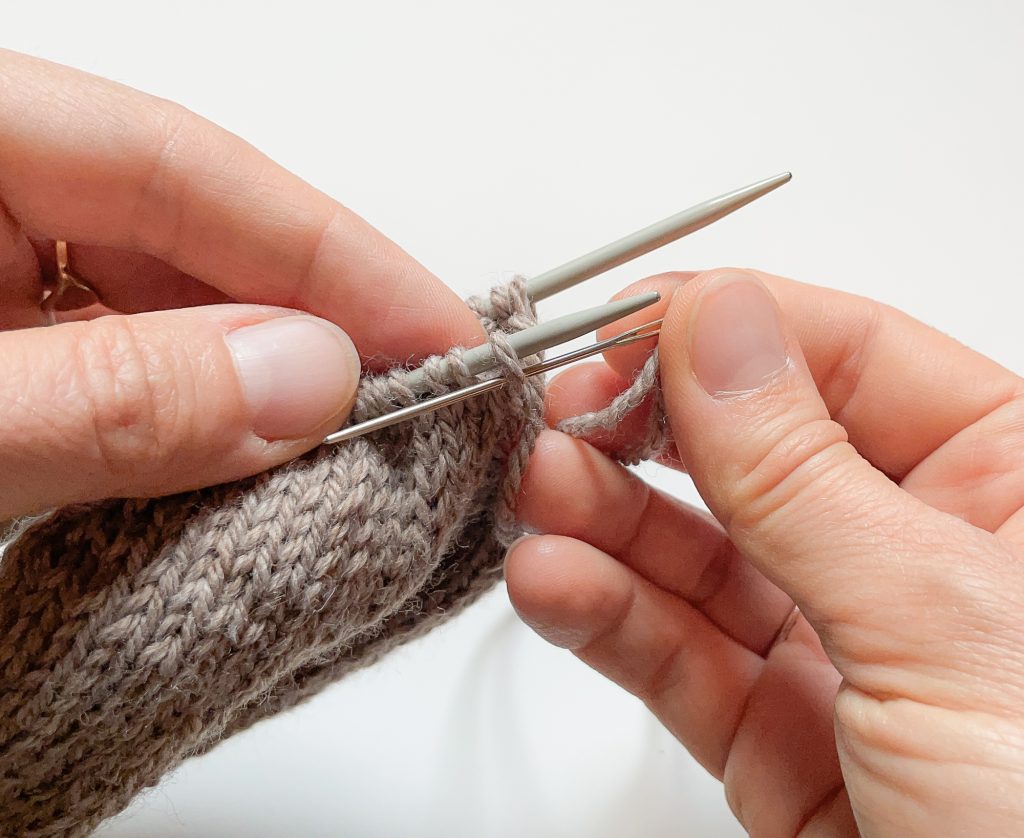

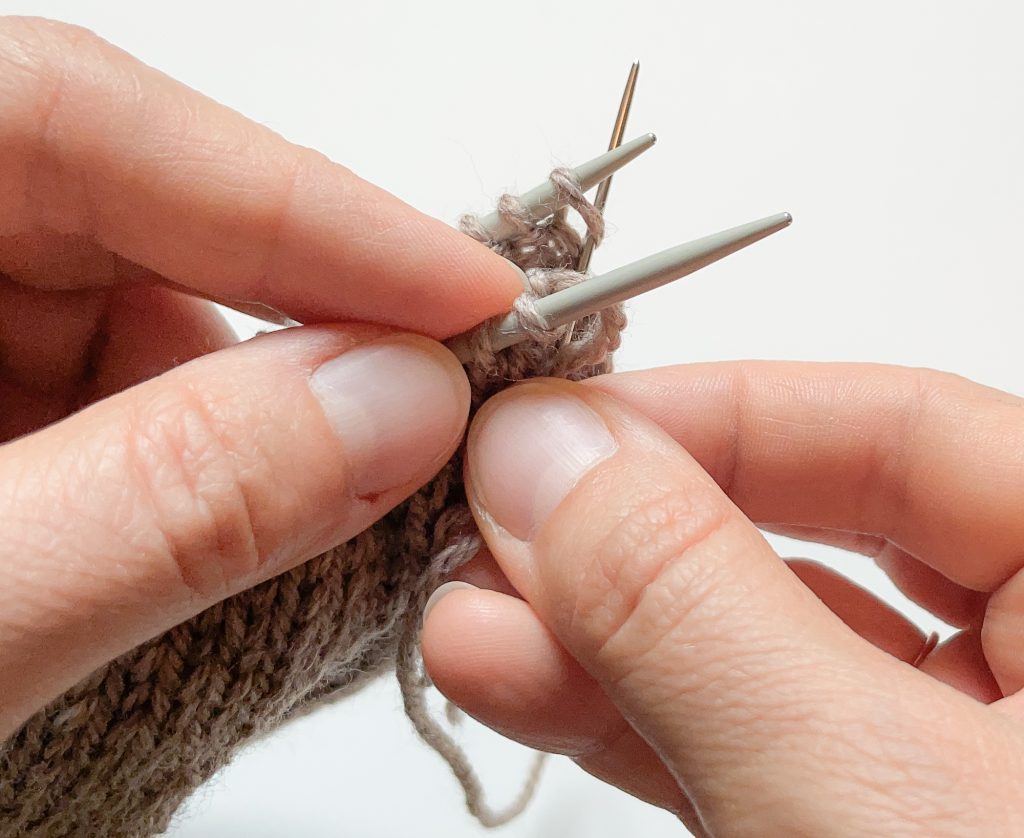
Repeat Steps 1-4 until only one stitch is left on each needle.
Work Steps 1 and 3 on these stitches.

